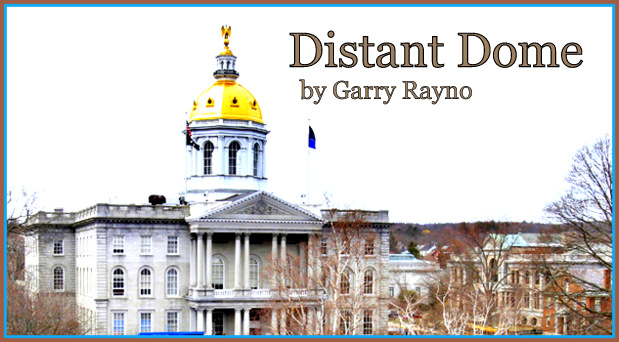
By GARRY RAYNO, InDepthNH.org
Many Granite Staters struggle to find affordable housing and have for many years.
Affordable housing is a chronic problem for people and for many businesses when potential employees turn down job offers due to the short supply of housing and its expense.
Recently the issue garnered press attention when one of the state’s largest employers, Dartmouth-Hitchcock Medical Center, said the lack of housing hurts its employee recruitment efforts.
Also a report was released this month blaming building and land use regulations in the state for rising housing costs.
The report was heavy on the statistical side reporting on the symptoms rather than the root causes of the problem.
It should be noted, the report’s author is Jason Sorens, of the Center for Ethics in Society at Saint Anselm College, and a founder of the Free State Project. The report is published byThe Josiah Bartlett Center for Public Policy, a free-market think tank funded in part by the Koch Network.
The report’s recommendations for deregulation, decentralization and school choice may reflect the authors’ political philosophy more than whether communities have legitimate reasons for restricting development.
A 30,000-foot look at the problem that has existed for decades reveals more fundamental reasons for the dearth of affordable housing.
Skyrocketing home prices and lagging construction are both issues with pandemic roots. People sought to escape populated urban centers by moving to rural areas and the supply chain meltdown creates major obstacles for the construction sector.
Tax System
Those problems are exacerbated by the state’s tax system.
Unlike most states, New Hampshire relies heavily on property taxes, particularly to pay for local government, with the most expensive piece being public schools.
Last year’s education funding study made it perfectly clear what most people already knew, the property tax system to pay for public education hurts students from property poor districts who lack the opportunities students from property wealthy districts enjoy.
The other serious problem for communities in New Hampshire is the current use program, established by the state legislature but funded through a community’s local property taxes.
Current Use
The current use program began in 1973 with a goal of preserving open space by assessing a property’s value of the use of the land and not its potential use.
Some communities assessed farmland and other large tracks as potential building lots, making it prohibitively expensive for the owners and encouraging them to sell the land to developers.
The program sought to preserve the land that helped define a community or to prevent “paving paradise to put up a parking lot.”
But as programs evolve, unintended consequences emerge.
Today much of the land in current use is owned by people who could afford to pay higher taxes on it, but that tax burden is shifted to the other property taxpayers in the community.
Some communities have more than 50 percent of their taxable land in current use, and if it is a property poor community — and many are — tremendous upward pressure is created on the property tax bills of the town’s other property owners.
Schools and current use are a double whammy for many municipalities.
Other communities have large amounts of tax exempt property like Concord, Durham, Hanover, Plymouth, Keene and Rindge.
That issue also influences every community’s land use regulations and consequently property values.
Master Plans
Developing a master plan and the zoning and planning ordinances reflecting the community’s priorities is a long, thoughtful process. The work has to be approved by the entire community, not just planners or selectmen or a small fraction of the community.
Under the weight of New Hampshire’s unique property tax system, many communities did what residents wanted and curtailed explosive growth to tamp down the number of students in schools which in turn drives up property taxes.
More modest growth also allows for better capital planning for the future.
So communities generally allowed higher density in the developed downtown areas but created graduated larger lot sizes tied to the land and municipal services available as potential development moved to more rural areas.
The regulations were refined after bad development impacted many communities, due mostly to questionable subdivision.
In western New Hampshire, a Vermont land development company was notorious for buying large parcels of undeveloped land along town roads, and subdividing it by meeting the minimum requirements for road frontage and then drawing parallel lot lines to produce thin, minimum-acre lots.
Many purchasers learned the lots were unbuildable due to topography or soils after they bought them, and then blamed towns for the problem.
Utility Costs
The high cost of housing is only one reason for New Hampshire’s high cost of living.
Utilities are more expensive in New Hampshire than many other places. In the last 30 years, New Hampshire has had and continues to have among the highest electric rates in the country.
One reason was the bankruptcy of Public Service and the resulting rate increases to pay for its acquisition, and more recently the state’s dependence on increasingly expensive natural gas to generate power.
New Hampshire’s utility regulators also do not have the reputation of being the most stringent for holding down electricity or telecom costs.
High to Low
If you look at the list of the most stringent land use regulations in the state according to the Bartlett study, you see communities that are either on the ocean — New Castle, Rye, Portsmouth, Newington, North Hampton, and Hampton Falls — or border a large lake like Moultonborough and New London. Only two communities do not have large tracks of waterfront property, Hanover and Waterville Valley.
Hanover is a college town, and Waterville Valley is a town built around a ski resort on national forest land.
The 10 towns with the least restrictive land use regulations, according to the report, are all in the sparsely populated North Country.
The two lists would indicate the land use regulations are tailored to fit the communities and not that the land use regulations created the communities and expensive housing.
Affordable housing is not a fixed problem, it fluctuates. What was affordable several years ago is not today because of the COVID-19 spike and the fact the wages of middle- and lower-class workers have stagnated or gone down in real money since the 1970s putting home ownership out of reach for more and more citizens.
More affordable housing would benefit both low-wage workers and the companies employing them. Senate President Chuck Morse had a good idea when he tried to encourage companies to begin addressing the need as part of the budget package.
Because of the state’s tax structure’s reliance on property taxes, developing affordable housing reaches beyond individual communities.
The problem needs a state-sponsored solution and it needs to include the business community.
The problem is not strict land use regulations, it is the state’s tax structure.
Garry Rayno may be reached at garry.rayno@yahoo.com.
Distant Dome by veteran journalist Garry Rayno explores a broader perspective on the State House and state happenings for InDepthNH.org. Over his three-decade career, Rayno covered the NH State House for the New Hampshire Union Leader and Foster’s Daily Democrat. During his career, his coverage spanned the news spectrum, from local planning, school and select boards, to national issues such as electric industry deregulation and Presidential primaries. Rayno lives with his wife Carolyn in New London.





